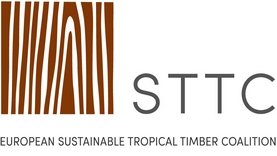ETTF and ATIBT merge trade and legality websites
The European Timber Trade Federation (ETTF) and the International Tropical Timber Technical Association (ATIBT) have agreed to combine their respective timber legality and due diligence information and advisory websites.
The organisations said that the two sites, ETTF’s Timber Trade Portal (www.timbertradeportal.com) and ATIBT’s Legal Timber Information (www.legal-timber.info), were highly complementary. A merged site, operating under the Timber Trade Portal banner and its url, will provide a more comprehensive facility and assure its future development.
The ETTF launched the Timber Trade Portal with backing from the European Sustainable Tropical Timber Coalition (STTC) and International Tropical Timber Organisation (ITTO). It provides current information on profiled supplier countries’ timber and forestry laws to help timber buyers satisfy the due care and due diligence demands of timber market legality regulation, such as the EU Timber Regulation (EUTR), US Lacey Act and Australian Illegal Logging Prohibition Regulation (AILPR). It also includes trade and market data and business contacts. The goal, said ETTF Secretary General André de Boer, is to help ‘’international timber traders do business with suppliers worldwide, and ensure that business is legal”.
To date the site has profiled 24 countries across Africa, the Americas, Eastern Europe and Asia.
ATIBT’s site includes legality data ‘country sheets’ on five African producers; Liberia, Ivory Coast, Gabon, Cameroon and Democratic Republic of Congo. These include details of legality and other documents required for timber exports. They list companies known to operate legally, species and products available and whether these are subject to trade or CITES restrictions.
The site also features an EUTR-aligned due diligence system.
“ Legal Timber. Info provides an intelligence and analysis centre, pooling relevant and verified information from a wide range of sources and presenting it in a ready-to-use format,” said ATIBT General Director Benoît Jobbé-Duval. “The aim is to assist importers put in place EUTR due diligence systems and to meet information needs of stakeholders, including EUTR competent authorities and monitoring organisations, the European commission and civil society.”
“Combining sites makes sense,” said Mr de Boer. “It will provide a single more powerful tool for timber legality and doing business. In addition it combines the expertise and experience of our organisations and lays foundations for an even more wide-ranging resource.”
He added that forest governance and timber traceability information on the sites could also prove valuable in third party sustainability certification implementation and maintenance.
